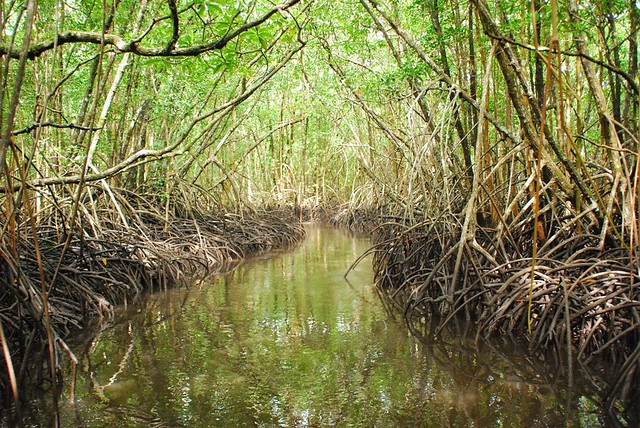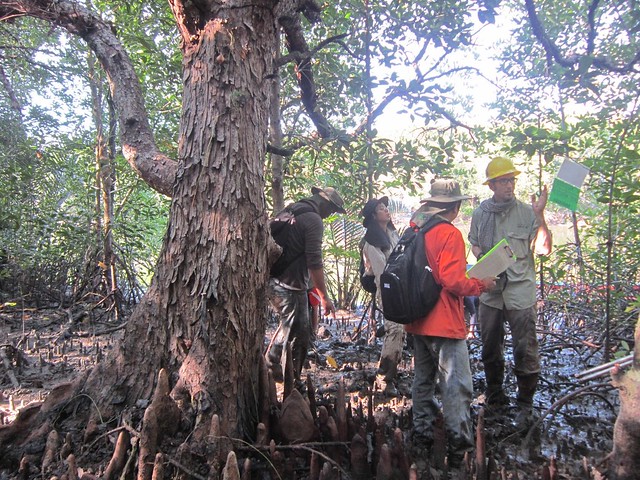
Mangrove forests along the coastlines in the Asia-Pacific region provide building materials for traditional homes, shelter fish and wildlife, protect communities from tsunamis and typhoons, and store more carbon than any other forested ecosystem in the world. Despite all they do for humans and the planet, mangrove forests are threatened by over harvesting and rising sea levels.
“A lot of Pacific Rim countries are working hard to conserve and restore their mangrove forests, but rising sea levels—a consequence of the changing global climate—remain a problem,” said Richard MacKenzie, a USDA Forest Service aquatic ecologist who works at the agency’s Institute of Pacific Islands Forestry in Hawaii.
They are eager to save their mangroves not only for the benefits they have long provided, but also because their tremendous capacity for storing carbon offsets greenhouse gas emissions from human activity.
MacKenzie and other U.S. scientists began working with Micronesia 15 years ago to help the country better manage its forests. Since then, their work has expanded to Cambodia, Indonesia, Vietnam, the Philippines, Papua New Guinea, Madagascar, and India.
To assist in restoring and preserving of their mangrove forests, MacKenzie and his research partners have collected data from research sites in the region. So far, the research is showing a couple of interesting findings.
They found that less than half of the sampled mangrove forests appear to be keeping up with the changes in sea levels. Those that are adapting are doing so mostly using unique aboveground root structures, trapping sediment from adjacent creeks or rivers or through tidal ocean flooding. The addition of this sediment, along with below-ground root growth, essentially raises the forest floor above sea level.
Those forests that are not adapting don’t have access to the same sedimentation or are experiencing erosion and are slowly drowning.
There are about 70 species of true mangroves in the world, and all of them are unique in their ability to tolerate saltwater flooding. However, if existing forests can’t raise their forest floors, the water-logged trees begin to die away, and new mangrove species move in. This permanently changes the forest composition and the ecological and commercial benefits mature mangrove forests provide to the region may be lost forever.
The good news is the team’s research also revealed is that mangrove forests are more resilient than scientists originally believed.
“Previous studies suggested that a threatened and diminished mangrove forest would need about 250 years to regain its historic carbon carrying capacity,” MacKenzie said. “Our research results say its only 25 years until they can store as much carbon as an intact, old growth mangrove forest. That’s great news for Pacific Rim countries.”

